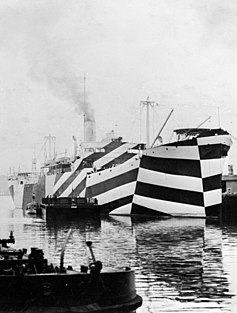
"The Orange Blossom Special".
Postcard depiction of the Seaboard Air Line Railroad Train, "The Orange Blossom Special",
which travelled between New York and Miami.
The Postcard touts the Train as being the only "All Electric" Train from New York to Florida (1939 Postmark). The term refers to the Diesel Engines which were used for the Train, beginning in 1938.
Date: Postmarked 1939.
Author: Tichnor Brothers, Boston.
(Wikimedia Commons)
It covered 1,327 miles (2,136 km) on the Pennsylvania Railroad from New York City to Washington, D.C., the Richmond, Fredericksburg and Potomac Railroad from Washington to Richmond, and the Seaboard Air Line Railroad from Richmond via Raleigh, Columbia, and Savannah to Miami. A section also went to Tampa and St. Petersburg.
The Train started on 21 November 1925 and was the brain-child of SAL President, S. Davies Warfield, who wanted to capitalise on booming development in Florida at the time. Warfield believed Florida was a land of opportunity, and, with fast, luxurious Trains, he could lure influential (not to mention wealthy) business leaders to The Sunshine State. In February 1926, the Train took thirty-five hours to run from New York to West Palm Beach, Florida (Seaboard track did not reach Miami until 1927).

Unidentified woman boarding "The Orange Blossom Special" Train,
in Sebring, Florida.
Date: Circa 1930.
Repository: State Library and Archives of Florida, 500 S. Bronough St.,
Tallahassee, FL 32399-0250 USA. Contact: 850.245.6700. Archives@dos.state.fl.us
Uploaded by We hope
Author: Florida Memory
(Wikimedia Commons)
Our Chef . . . spent nine of his forty-three years with The Pennsylvania Railroad as Chef on the celebrated All-Pullman New York-to-Florida Train "The Orange Blossom Special" — the most luxurious Winter-Season Train ever devised by man. Nothing even remotely resembling a can opener was allowed on the premises. All the pies, cakes, rolls, birthday cakes were baked on-board, under his supervision. Cut flowers and fresh fish were taken on at every re-victualling Stop, and the Train carried thirty-five hundred Dollars' worth of wine, liquor and champagne — these at pre-Prohibition prices — for each Run.
The Service was suspended during World War II to free the equipment up for carrying troops. Its last run was in 1953. This market is now handled by Amtrak's Silver Star.
In early 2012, a similar locomotive, painted to resemble a locomotive of the time, and lettered "Orange Blossom Special", was moved in from its long-time display location, at the Church Street Station in Orlando, Florida, to The Gulf Coast Railway Museum, in nearby Tampa. Plans are for a multi-year restoration to active status for eventual Excursion Service.
In early 2012, a similar locomotive, painted to resemble a locomotive of the time, and lettered "Orange Blossom Special", was moved in from its long-time display location, at the Church Street Station in Orlando, Florida, to The Gulf Coast Railway Museum, in nearby Tampa. Plans are for a multi-year restoration to active status for eventual Excursion Service.

Arrival of "The Orange Blossom Special" train in Plant City, Florida.
This was the arrival of the first diesel-powered passenger train
in the South-East of The United States.
Date: December 1938.
Repository: State Library and Archives of Florida, 500 S. Bronough St.,
Tallahassee, FL 32399-0250 USA. Contact: 850.245.6700. Archives@dos.state.fl.us
Uploaded by oaktree_b
Author: Florida Memory
(Wikimedia Commons)
Bill Monroe recorded Rouse's and Wise's tune in 1942 (with Art Wooten on fiddle) and popularised the tune. Johnny Cash named his 1965 album after the song. The song was also recorded by Bill Ramsey and Don Paulin.
"Orange Blossom Special".
Sung by Johnny Cash.
Available on YouTube at
If Rouse and Wise did see a Streamlined Seaboard Train in 1938, it was most likely "The Silver Meteor", which was Streamlined with its Stainless Steel Coaches. The name of this Train was chosen by a public contest. The Seaboard's Lightweight Trains later became known as The Silver Fleet. This included "The Silver Meteor", "The Silver Star", and "The Silver Comet. The Train did receive modern EMC E4 Diesel locomotives in 1938, but continued using Heavyweight Pullmans and American Flyer Coaches until its demise in 1953.
It is also possible the songwriters saw one of the Twin Cities Zephyrs at the Jacksonville Railroad Station in 1935. The Chicago, Burlington and Quincy Railroad brought the Train to Florida at the invitation of The Seaboard Railroad. It toured the State, making Stops in both East and West Coast Florida Cities, where the public was able to both view and tour "The Zephyr". Jacksonville was one of the Stops on its Florida Tour.

Seaboard Railway's "Orange Blossom Specials".
Date issued: 1930 - 1945 (approximate).
Collection: The Tichnor Brothers Collection.
Location: Boston Public Library.
Date: 10 February 2011.
Uploaded by oaktree_b
Author: Boston Public Library
(Wikimedia Commons)


.jpg&container=blogger&gadget=a&rewriteMime=image%2F*)
.jpg&container=blogger&gadget=a&rewriteMime=image%2F*)










